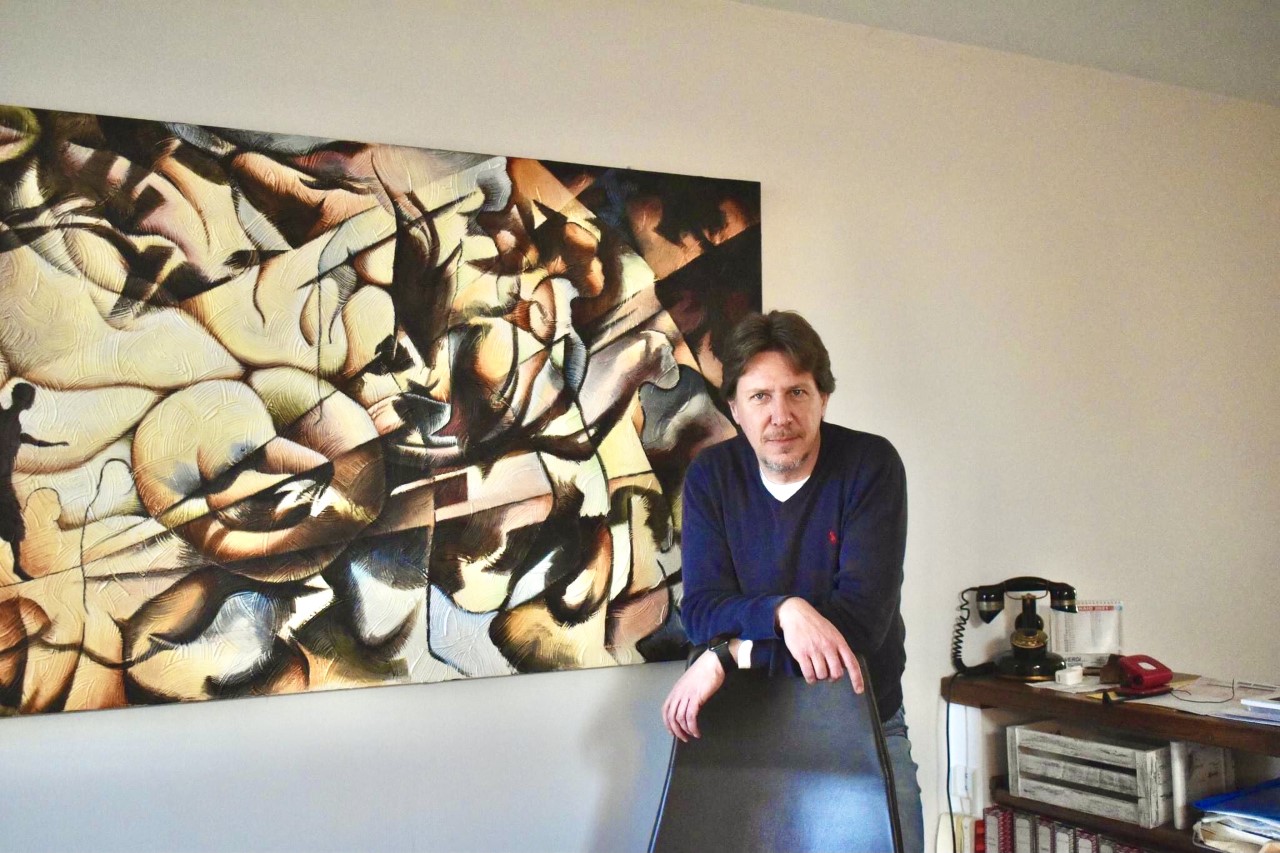In recent days we have had the privilege of being received, in his residence in Italy, by Andrea Martis, owner artist and custodian of a peculiar painting technique unique in the world, who, for the first time in at least twenty years, has agreed to grant an interview as well as access to his studio to a newspaper, choosing to do so with italiani.it. This fact, which in addition to flattering us, could generate unexpected effects onhighly reserved, almost secret artistic activity, which the painter born in Cagliari of a Sardinian father and Roman mother with Belgian ancestry had chosen to to reserve, until today, to a select few.
Martis, in fact, has been leading for thirty years a double life rigorously structured in which, during the day, he is a brilliant and methodical manager of one of the most important Italian oil companies (the Saras of the Moratti family) while, at night, he is a tormented, brilliant and unattainable painter.
Few, in fact, the privileged people admitted to his studio and who are granted the opportunity to grab a canvas: meticulously selected enthusiasts over the years, whose credentials to be able to deal with the purchase of a painting are hanging on the unpredictability of the establishment of an emotional condition around the work itself. In short, you can have a picture of it only if it turns out that it already belonged to you.
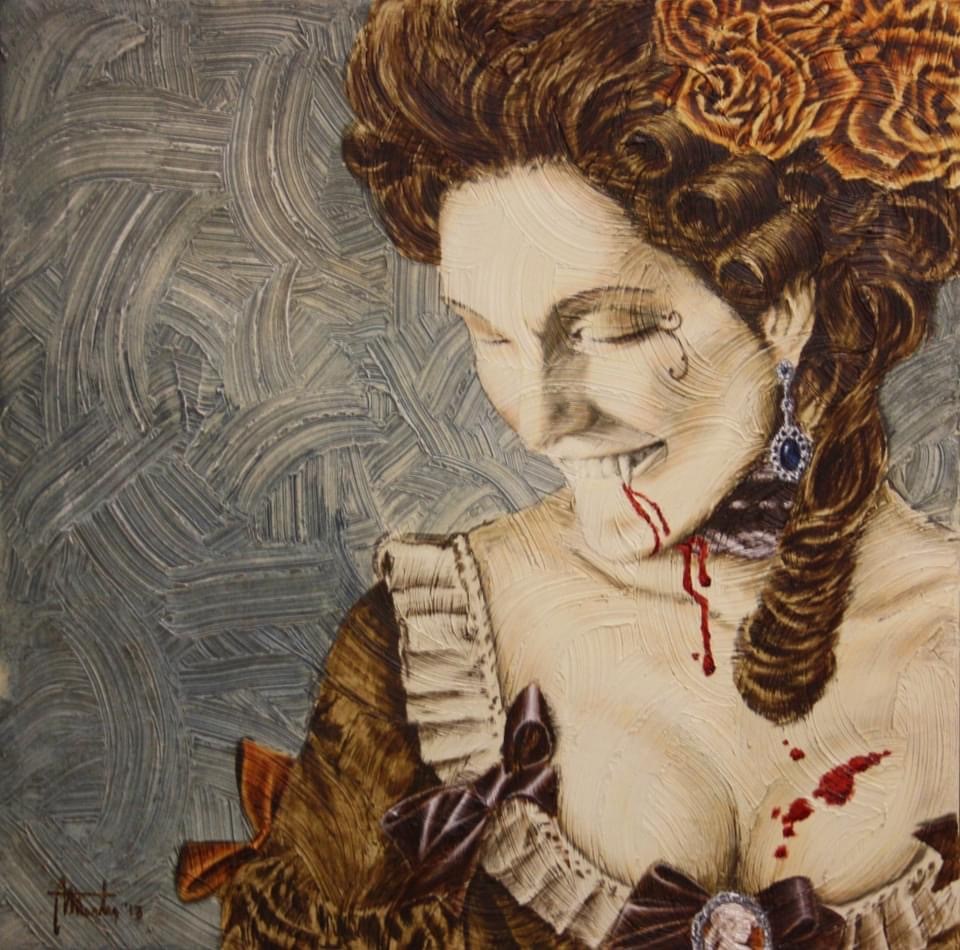
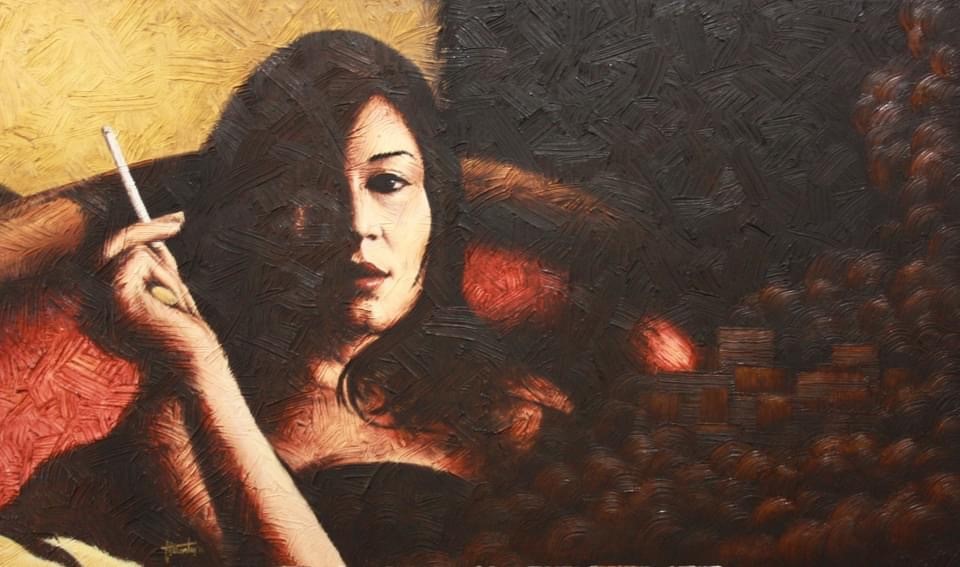
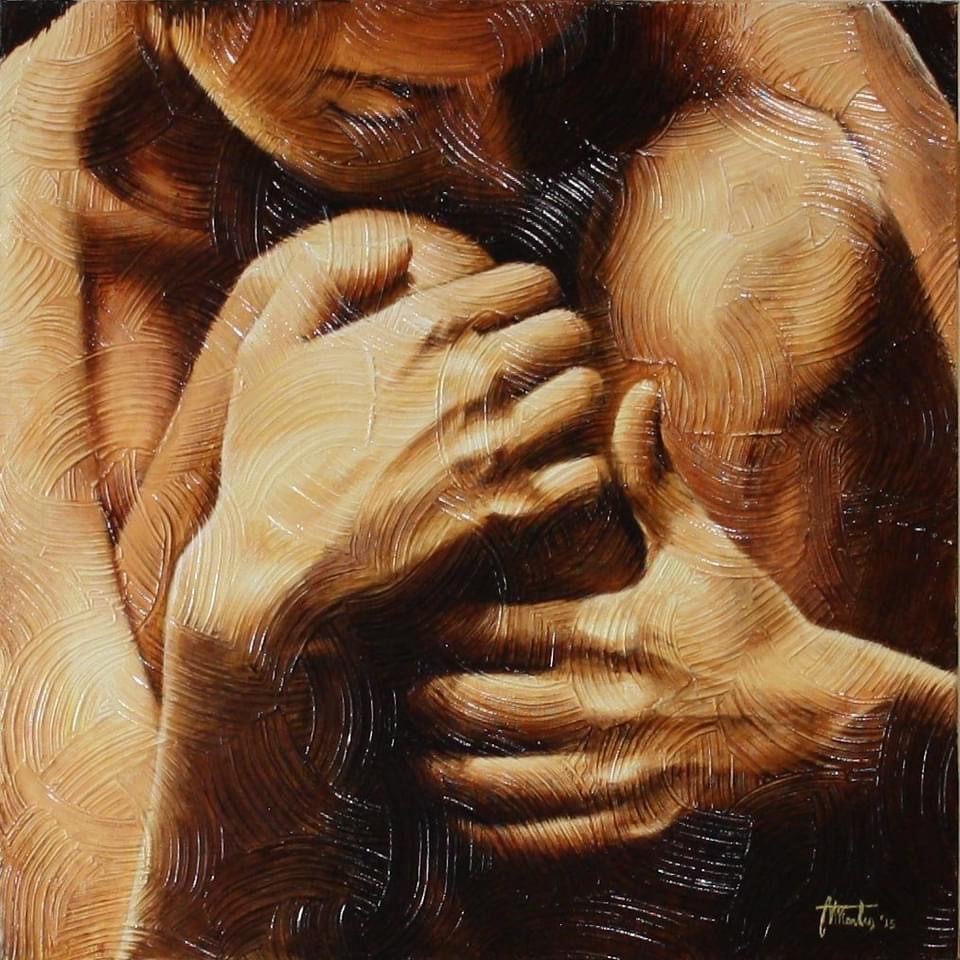
After the brief interlude of a small atelier that lasted a few years, Martis decided to retire to the countryside where he set up a studio in which he could isolate himself.
Among his followers we can still count so-called important people: artists, writers, industrialists, psychologists, but the painter built a fort to keep him away and away from the logic of the market, then surgically avoiding the world of galleries and the quotation system. The evaluation of a Martis is an energy question. But, since it is not the economic value of his paintings what the painter wants to talk about, of course, we ask him to tell us about the beginning of him.
I started painting out of need, as a self-taught, in 1993, after classical studies, while I was studying law.
What were your models?
I cannot say that I had a teacher as a model to follow because my goal has always been to find a form of expression that fully represented me.
On the other hand. I have thoroughly studied many masters with whom, for one reason or another, I fell in love: Salvador Dali (the investigator of the unconscious), Kandinsky (the master of color and construction), Turner (the master of intuitions and a thousand revolutions), Caravaggio, Pollock, Kiefer and many others.
And what were you looking for in each of these, what was your emergency, your need (as you said earlier?)
From the beginning I tried to understand what distinguished art from what it was not, art from craftsmanship. From there began a search that has lasted for almost thirty years. Over the years I have become convinced that a "true" artist, and consequently a "true" work of art, always observes three principles:
- The artist must represent the era in which he lives
- The artist must represent himself and himself only
- The artist must represent his own idea of Sublime
The first principle will make the artist a sponge, capable of absorbing everything around him. The second condition will make the artist unequivocally "original and unique" as is every human being. Furthermore, this ability, combined with the first, will make the artist capable of becoming first a filter and, finally, one sort of prophet (capable of showing others a new way of looking at things and finding a way). The third is the most intrinsic condition of art. What, through spirituality, pushes her to perfection (see "The spiritual in art" by Kandinsky). The one that forces it to an indissoluble bond with the divine and determines its most intimate function.


Up to here it is clear. And you understand the rigor with which you have always faced this path. It seems to me that self-denial to these precepts resembles the way of the ascetic ...
Following these three precepts inevitably leads to the search for truth (in themselves, in the surrounding world and in something higher). The only path that will lead him to decode and develop a new communicative code which, in my opinion, constitutes the main purpose of every artist. Obviously in painting, and perhaps not only in that, the truth is forced to deal with appearance and reality. As is well known, each era has given congenitally different answers to this dichotomy and it is perhaps from these differences that the artistic currents in which many artists recognized themselves and which, from time to time, adhered to, originated.
Know yourself
Your path has lasted for thirty years. What are the tests you have had to confront?
First of all, having to know myself thoroughly. I won't spend much time on "Know thyself"; there is no recipe for this theme. What matters is that through this research we come to have one “Coherent vision” and a style that makes us recognizable, regardless of the signature.
The present time
Then, the comparison with the Present tense. The investigation of our age is one of the fundamental elements to be able to elaborate a new communicative code and fulfill the most intimate function of art.
Our age represents an algebraic elevation with respect to the homogeneous flow of past centuries ...
Our age is really very different from all past eras and, as such, it can only return profoundly new and original works of art and answers. In my opinion, the present time is characterized by some totally new peculiarities:
- The theory of relativity and other scientific discoveries related to physics
- Discoveries related to psychology
- The exasperated communication through TV and social media
- Marketing applied to every aspect of life
The first two, which we have been dealing with for at least a century, have marked an indelible mark in our culture and our beliefs.
The combination of the two has pulverized any absolute principle and, with it, the possible opinions on things. Moreover, by substituting the subject for the object, he has fragmented even more the possible "truths", multiplying the possible dimensions along the lines of string theory. In pictorial terms he has, in fact, annihilated impressionism (linked to the object) in favor of expressionism (linked to the subject).
Subsequently, the exasperated communication that was created through television first and then social media, finding fertile ground in the first two points examined, generated billions of opinion leaders (often empty of content), who they take us far beyond Andy Warhol's optimism (each has earned much more than their sacrosanct quarter of an hour of fame).
This, in my view, has generated what I would call a sound and visual chaos, a background buzz, which prevents you from clearly hearing the most acute and intelligent messages.


Finally, Marketing and its goal of creating unnecessary needs for the sole purpose of satisfying them, which being applied to every field of human life (not least politics), has generated neurosis of any kind, throwing us into an era of ideological confusion that is difficult to govern.
The communicative code
Does your art spring from these premises?
Mine communicative code obviously it builds on the previous philosophical premises. Thus, I aim to represent the appearance and the real of our age through works that could be distinguished in "Views" and "visions". The former materialize, for example, in portraits or landscapes. In practice in everything that is generally considered real, but which in reality is only appearance.
The pictorial subject which, given the premises, it would be better to define object, is represented in an almost photographic form. Between the object and the user, however, my peculiar technique interposes (that scratched and moved material) which aims to simulate a sort of glass plate, a membrane. In practice, a sort of subjective, psychological filter that distorts the object.
The effect is amplified by the fact that the choice of colors is almost never perfectly "realistic". The combination of the different choices ends up leaving the viewer as if suspended between an apparent reality and a subjective / psychological reality.
in visions, on the other hand, we want to represent (not apparent) Reality as I perceive it.
In these canvases, in fact, an attempt is made to translate the aspects mentioned previously regarding our age.
Consequently, it will be possible to notice:
- background hums (images that overlap on several levels)
- Marketing (which proposes apparent images - often winking - to hide much less noble ulterior motives)
- Overlapping messages contradicting each other
- Obsessive repetitiveness and neurosis
In this second type of works, moreover, they may appear other types of materiality, scratches and chromatisms. They may appear at the same time figurative and abstract, as if they were different types of communication that, overlapping, they disturb the understanding and the senses. All this, of course, makes this second type of works more conceptual than the first.
It could also be said that in my works they are always present, as in music, at least three levels of construction: rhythm, timbre and melody. The use of these three levels, depending on whether they are used in a unique way or in contrast with each other, will create that range of communicative combinations useful for reproduce the assonances or dissonances that our age proposes to us.
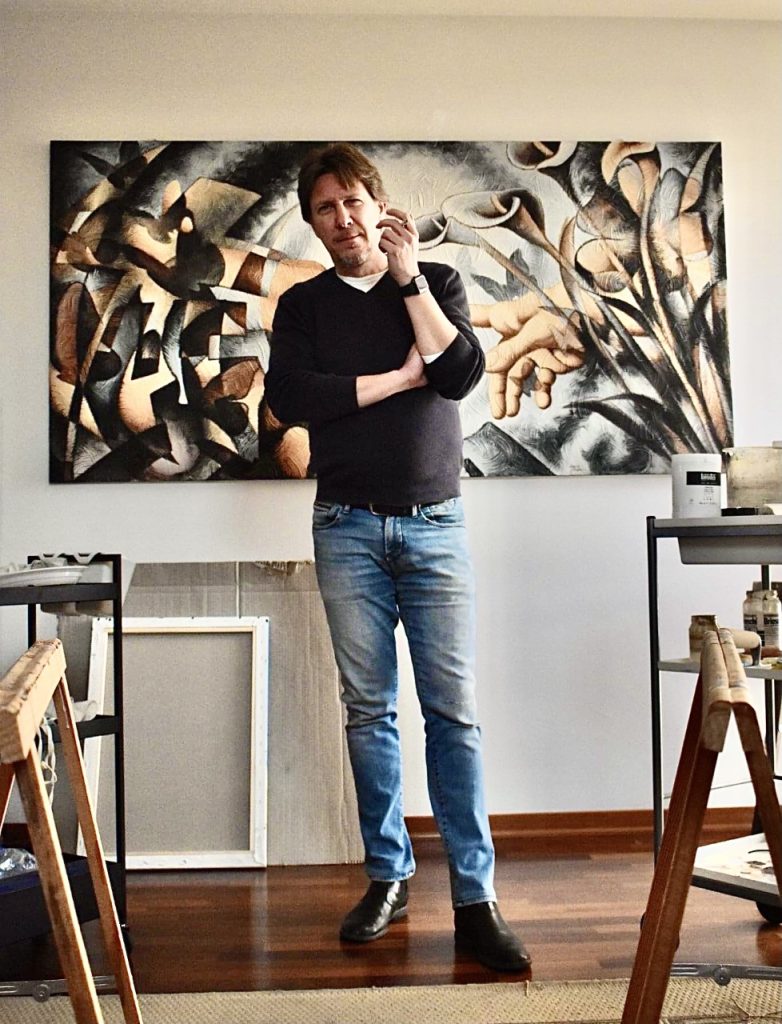
The mission that my work aims to achieve, after all, is to represent the contradictions of our time, the dangers that lie behind the hypertrophic communication markettara, the inability of our brain to elaborate the enormous amount of visual and sound inputs that our society imposes on us and the neuroses that these generate in our brain. In front of my work, therefore, the viewer will have to face a sea of symbols, subliminal messages and manipulations mark where the message visible often contradicts the underlying meaning. Through this path he will therefore be able to try to better understand how the tools of the new communication can act on our feelings, trying to tto find the way to emancipate oneself from it.
Info: [email protected]

